CAA News Today
New in caa.reviews
posted by CAA — August 18, 2017
 Katja Müller-Helle reads Die Tode der Fotografie II: Tod, Theorie, und Fotokunst by Katharina Sykora. In the second volume of The Deaths of Photography series, the author argues that “the interplay between photography and death engenders language and images powerful enough to produce a ‘multiplication of ideas,’” focusing “on the history of theories of photography’s death in relation to artistic positions.” Read the full review at caa.reviews.
Katja Müller-Helle reads Die Tode der Fotografie II: Tod, Theorie, und Fotokunst by Katharina Sykora. In the second volume of The Deaths of Photography series, the author argues that “the interplay between photography and death engenders language and images powerful enough to produce a ‘multiplication of ideas,’” focusing “on the history of theories of photography’s death in relation to artistic positions.” Read the full review at caa.reviews.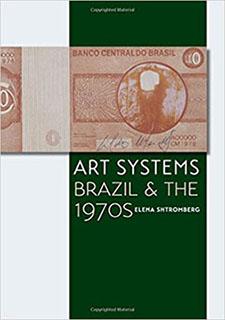 Nadja Rottner discusses Elena Shtromberg’s Art Systems: Brazil and the 1970s and Irene V. Small’s Hélio Oticica: Folding the Frame. Both “propose a new social-art history, which posits art as the gateway onto knowledge,” but “key differences” between them “can be traced back to alternative readings of the notion of the system and how communication is imbricated by and constructs circuits of sociality.” Read the full review at caa.reviews.
Nadja Rottner discusses Elena Shtromberg’s Art Systems: Brazil and the 1970s and Irene V. Small’s Hélio Oticica: Folding the Frame. Both “propose a new social-art history, which posits art as the gateway onto knowledge,” but “key differences” between them “can be traced back to alternative readings of the notion of the system and how communication is imbricated by and constructs circuits of sociality.” Read the full review at caa.reviews.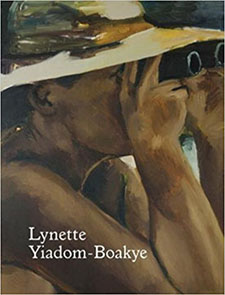 Jessica Bell Brown reviews Lynette Yiadom-Boakye: Verses After Dusk, an exhibition catalogue from Serpentine Gallery. Featuring the artist’s “stunning painterly and writerly interrogations of fictional characters and black figures in her paintings, etchings, short stories, poems, and essays, along with texts by” Glenn Ligon, Hilton Als, and Amira Gad, it asks viewers to unravel “what it means to represent a body in space.” Read the full review at caa.reviews.
Jessica Bell Brown reviews Lynette Yiadom-Boakye: Verses After Dusk, an exhibition catalogue from Serpentine Gallery. Featuring the artist’s “stunning painterly and writerly interrogations of fictional characters and black figures in her paintings, etchings, short stories, poems, and essays, along with texts by” Glenn Ligon, Hilton Als, and Amira Gad, it asks viewers to unravel “what it means to represent a body in space.” Read the full review at caa.reviews.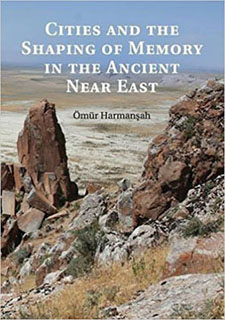 James F. Osborne examines two books by Ömür Harmanşah: Cities and the Shaping of the Memory in the Ancient Near East and Place, Memory, and Healing: An Archeology of Anatolian Rock Monuments. These “thoughtful and provocative monographs” focus on different topics—cities and landscape monuments—but both reveal “an urgent concern” for scholars “to embrace the socially constructed nature of the built environment.” Read the full review at caa.reviews.
James F. Osborne examines two books by Ömür Harmanşah: Cities and the Shaping of the Memory in the Ancient Near East and Place, Memory, and Healing: An Archeology of Anatolian Rock Monuments. These “thoughtful and provocative monographs” focus on different topics—cities and landscape monuments—but both reveal “an urgent concern” for scholars “to embrace the socially constructed nature of the built environment.” Read the full review at caa.reviews.New in caa.reviews
posted by CAA — August 11, 2017
Deanna Pytlinski visits Women of Abstract Expressionism at the Denver Art Museum. “There is much to celebrate about the exhibition,” and “the mood of the show was decidedly exuberant in its design and content.” “Paying overdue attention to the presence of women in a movement long understood to be inherently masculinist,” it makes “the reasons for Abstract Expressionism’s success come alive once again.” Read the full review at caa.reviews.
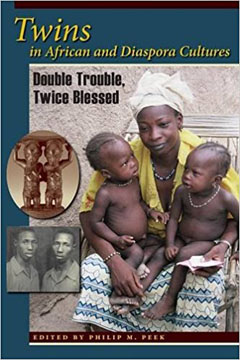 Ugochukwu-Smooth C. Nzewi reviews Twins in African and Diaspora Cultures: Double Trouble, Twice Blessed, edited by Philip M. Peek. The book challenges “existing African arts and culture scholarship’s disproportionate attention on how twin births constitute a problem to parents and communities,” instead taking “a dialectic approach to show how twins embody ambiguity” and “complementary duality.” Read the full review at caa.reviews.
Ugochukwu-Smooth C. Nzewi reviews Twins in African and Diaspora Cultures: Double Trouble, Twice Blessed, edited by Philip M. Peek. The book challenges “existing African arts and culture scholarship’s disproportionate attention on how twin births constitute a problem to parents and communities,” instead taking “a dialectic approach to show how twins embody ambiguity” and “complementary duality.” Read the full review at caa.reviews.
Eric M. Frank discusses the Museo dell’Opera del Duomo in Florence, Italy, which opened in 2015. The “spectacular new” institution is “a modern manifestation” of the “same Enlightenment principles that inspired the creation of the public museum,” as well as “an extensive pedagogical installation focused on historical context and religious belief that intentionally aspires to educate and spiritually transform each visitor.” Read the full review at caa.reviews.
New in caa.reviews
posted by CAA — August 04, 2017
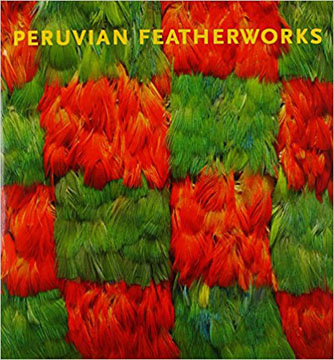 Amy Buono reads Peruvian Featherworks: Art of the Precolumbian Era, edited by Heidi King. The volume is “an important contribution to a profoundly complex yet largely overlooked artistic genre: Andean featherwork.” It “highlights both the difficulties of interpreting ancient Andean featherworking and its rich scholarly potential” and “is a superb resource for understanding how featherwork fits into the larger arena of Andean artistic practices.” Read the full review at caa.reviews.
Amy Buono reads Peruvian Featherworks: Art of the Precolumbian Era, edited by Heidi King. The volume is “an important contribution to a profoundly complex yet largely overlooked artistic genre: Andean featherwork.” It “highlights both the difficulties of interpreting ancient Andean featherworking and its rich scholarly potential” and “is a superb resource for understanding how featherwork fits into the larger arena of Andean artistic practices.” Read the full review at caa.reviews.
 Rhonda L. Reymond reviews Civil Rights and the Promise of Equality and African American Women, both edited by Laura Coyle and Michèle Gates Moresi, which are part of a series published by the National Museum of African American History and Culture. “These volumes deserve a place on library bookshelves enriching the photographic section in general and adding to the significant number of books examining or reproducing images of African Americans.” Read the full review at caa.reviews.
Rhonda L. Reymond reviews Civil Rights and the Promise of Equality and African American Women, both edited by Laura Coyle and Michèle Gates Moresi, which are part of a series published by the National Museum of African American History and Culture. “These volumes deserve a place on library bookshelves enriching the photographic section in general and adding to the significant number of books examining or reproducing images of African Americans.” Read the full review at caa.reviews.
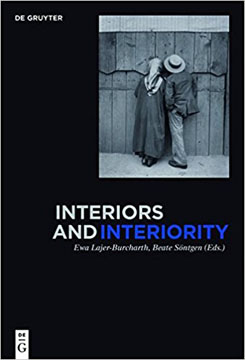 Anne Leonard discusses Interiors and Interiority, edited by Ewa Lajer-Burcharth and Beate Söntgen. Featuring “twenty-two essays, mostly by German and U.S. scholars,” the book argues that “the relationship between interiors and interiority is not limited to private spaces and individual psychology but engages just as ineluctably with complex dynamics of performativity, cultural mobility, technology, and material agency.” Read the full review at caa.reviews.
Anne Leonard discusses Interiors and Interiority, edited by Ewa Lajer-Burcharth and Beate Söntgen. Featuring “twenty-two essays, mostly by German and U.S. scholars,” the book argues that “the relationship between interiors and interiority is not limited to private spaces and individual psychology but engages just as ineluctably with complex dynamics of performativity, cultural mobility, technology, and material agency.” Read the full review at caa.reviews.
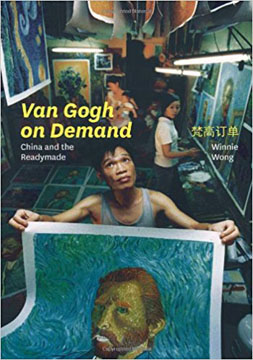 Jenny Lin examines Van Gogh on Demand: China and the Readymade by Winnie Won Yin Wong. The author “not only overturns accounts of Dafen as a factory full of exploited assembly-line painters, which she successfully reveals as strategically crafted fictions, but also unsettles contemporary art’s unspoken hierarchies and topples modernist and postmodernist assumptions about originality, authenticity, and authorship.” Read the full review at caa.reviews.
Jenny Lin examines Van Gogh on Demand: China and the Readymade by Winnie Won Yin Wong. The author “not only overturns accounts of Dafen as a factory full of exploited assembly-line painters, which she successfully reveals as strategically crafted fictions, but also unsettles contemporary art’s unspoken hierarchies and topples modernist and postmodernist assumptions about originality, authenticity, and authorship.” Read the full review at caa.reviews.
New in caa.reviews
posted by CAA — July 28, 2017
Kris Cohen visits Josh Kline: Freedom at the Portland Art Museum. “The first work in a projected five-work cycle,” Freedom imagines “a future that extends out from the present’s particular techno-economic landscapes.” The artist “takes the technologies and labor economies of neoliberalism not just as the context for his work but as the medium,” and the show is “far more esoteric than Kline admits.” Read the full review at caa.reviews.
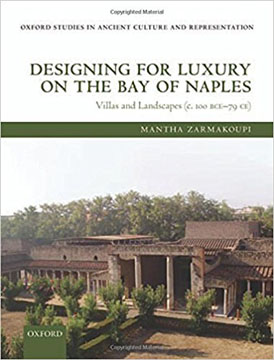 Elaine K. Gazda reads Designing for Luxury on the Bay of Naples: Villas and Landscapes (c. 100 BCE–79 CE) by Mantha Zarmakoupi. The author “argues that by appropriating selected elements of Hellenistic and Roman architecture designers created a new architectural language for Roman luxury villas.” The book’s “primary contribution” lies in its “analyses of the physical components of this language.” Read the full review at caa.reviews.
Elaine K. Gazda reads Designing for Luxury on the Bay of Naples: Villas and Landscapes (c. 100 BCE–79 CE) by Mantha Zarmakoupi. The author “argues that by appropriating selected elements of Hellenistic and Roman architecture designers created a new architectural language for Roman luxury villas.” The book’s “primary contribution” lies in its “analyses of the physical components of this language.” Read the full review at caa.reviews.
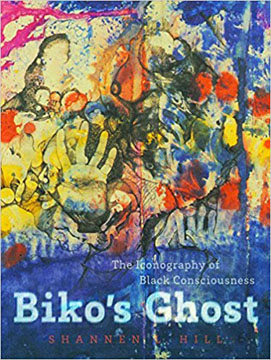 Jessica Stephenson reviews Shannen L. Hill’s Biko’s Ghost: The Iconography of Black Consciousness. The author “offers a convincing reconsideration of the contributions” that Black Consciousness and Stephen Biko’s “meaning and legacy” give “to a visual culture of liberation in South Africa.” Presenting “an impassioned redress,” she argues that this history has previously been marginalized and willfully misread. Read the full review at caa.reviews.
Jessica Stephenson reviews Shannen L. Hill’s Biko’s Ghost: The Iconography of Black Consciousness. The author “offers a convincing reconsideration of the contributions” that Black Consciousness and Stephen Biko’s “meaning and legacy” give “to a visual culture of liberation in South Africa.” Presenting “an impassioned redress,” she argues that this history has previously been marginalized and willfully misread. Read the full review at caa.reviews.
New in caa.reviews
posted by CAA — July 21, 2017
Edith Wolfe visits Adam Pendleton: Becoming Imperceptible at the Contemporary Art Center in New Orleans. The exhibition is “charged with a political urgency at odds with the artist’s restrained forms,” yet “the triumph—and challenge—of Pendleton’s language-based enquiries reside in their capacity to interrogate system and process as provocatively as they explore the African American experience.” Read the full review at caa.reviews.
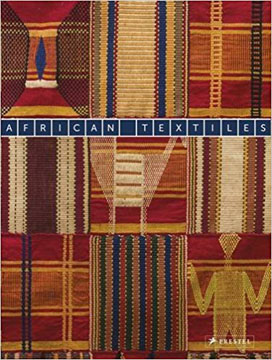 Erin M. Rice reviews African Textiles: The Karun Thakar Collection with contributions by Duncan Clarke and Miriam Ali-de-Unzaga. While “the text itself does not provide the groundbreaking research the authors call for, it does highlight parts of a collection with great potential for future in-depth, object-based research,” and “the book is superbly illustrated with quality, color photographs.” Read the full review at caa.reviews.
Erin M. Rice reviews African Textiles: The Karun Thakar Collection with contributions by Duncan Clarke and Miriam Ali-de-Unzaga. While “the text itself does not provide the groundbreaking research the authors call for, it does highlight parts of a collection with great potential for future in-depth, object-based research,” and “the book is superbly illustrated with quality, color photographs.” Read the full review at caa.reviews.
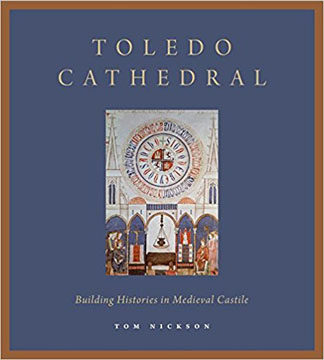 Elisa A. Foster reads Toledo Cathedral: Building Histories in Medieval Castile by Tom Nickson. The author “endeavors to untangle the complicated and often tacitly accepted ‘building history’ of the cathedral’s construction.” “A wonderfully interdisciplinary study,” the “impressive” volume “is a significant contribution to recent scholarship on medieval Spain as well as Gothic architecture more broadly.” Read the full review at caa.reviews.
Elisa A. Foster reads Toledo Cathedral: Building Histories in Medieval Castile by Tom Nickson. The author “endeavors to untangle the complicated and often tacitly accepted ‘building history’ of the cathedral’s construction.” “A wonderfully interdisciplinary study,” the “impressive” volume “is a significant contribution to recent scholarship on medieval Spain as well as Gothic architecture more broadly.” Read the full review at caa.reviews.
Tirza True Latimer discusses the reopening of the San Francisco Museum of Modern Art. Although the architecture, which “more than doubles” the galleries, offers “the tacit promises of disruption,” “the artworks exhibited in SFMOMA’s inaugural year are predominately canonical.” Only “time will tell what stories can be told and how the holdings can be differently expanded, displayed, and contextualized.” Read the full review at caa.reviews.
New in caa.reviews
posted by CAA — July 14, 2017
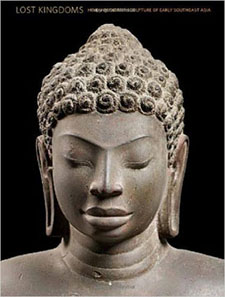 Emma Natalya Stein reviews the exhibition catalogue Lost Kingdoms: Hindu-Buddhist Sculpture of Early Southeast Asia, published by the Metropolitan Museum of Art. Representing “a watershed moment in the historiography of Southeast Asia, especially in terms of its relationship with India,” the “well-researched and beautifully illustrated catalogue” showcases “a truly remarkable body of material.” Read the full review at caa.reviews.
Emma Natalya Stein reviews the exhibition catalogue Lost Kingdoms: Hindu-Buddhist Sculpture of Early Southeast Asia, published by the Metropolitan Museum of Art. Representing “a watershed moment in the historiography of Southeast Asia, especially in terms of its relationship with India,” the “well-researched and beautifully illustrated catalogue” showcases “a truly remarkable body of material.” Read the full review at caa.reviews.
 Carmen Pérez González reads The Arab Imago: A Social History of Portrait Photography, 1860–1910 by Stephen Sheehi. The author aims “to ‘provincialize’ the history and ‘nature’ of photography,” and the “groundbreaking” volume “is an ambitious and theoretically challenging study, a significant and original work of social analysis of mostly unknown photographic material from the 1860s onwards.” Read the full review at caa.reviews.
Carmen Pérez González reads The Arab Imago: A Social History of Portrait Photography, 1860–1910 by Stephen Sheehi. The author aims “to ‘provincialize’ the history and ‘nature’ of photography,” and the “groundbreaking” volume “is an ambitious and theoretically challenging study, a significant and original work of social analysis of mostly unknown photographic material from the 1860s onwards.” Read the full review at caa.reviews.
New in caa.reviews
posted by CAA — July 07, 2017
Cindy Lisica visits We Chat: A Dialogue in Contemporary Chinese Art at the Asia Society Texas Center. The exhibition features artists “who were of single-digit age during the 1989 Tiananmen Square protest-turned-massacre” and are “self-reflective and uninhibited by conventional social constructions of the past.” It is “a layered, nuanced, and exhilarating presentation of contemporary currents in Chinese art.” Read the full review at caa.reviews.
Alpesh Kantilal Patel reviews Nari Ward: Sun Splashed and Firelei Báez: Bloodlines, both at the Pérez Art Museum Miami. The “first mid-career retrospective of the Jamaican-born” Ward and his “diverse oeuvre” “overlapped with “a smaller solo exhibition of primarily paintings and drawings by the Dominican Republic-born Báez, a former student of Wards,” presenting “a carefully constructed curatorial conceit.” Read the full review at caa.reviews.
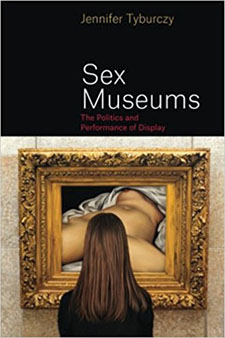 Sampada Aranke reads Sex Museums: The Politics and Performance of Display by Jennifer Tyburczy. In this “dynamic and compelling study,” the author “provocatively weaves together a mode of research and writing that thickens the role of sex in the museum . . . cracking[ing] open an unwieldy composition of narratives, critical approaches, and sensual objects to rethinking the pleasure and politics of display.” Read the full review at caa.reviews.
Sampada Aranke reads Sex Museums: The Politics and Performance of Display by Jennifer Tyburczy. In this “dynamic and compelling study,” the author “provocatively weaves together a mode of research and writing that thickens the role of sex in the museum . . . cracking[ing] open an unwieldy composition of narratives, critical approaches, and sensual objects to rethinking the pleasure and politics of display.” Read the full review at caa.reviews.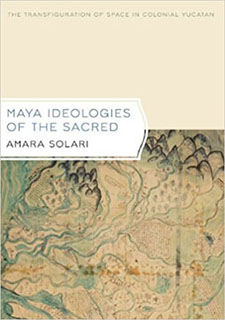 Ana Pulido-Rull discusses Amara Solari’s Maya Ideologies of the Sacred: The Transfiguration of Space in Colonial Yucatan. The author “examines the city of Itzmal” to “illustrate how this project was heavily influenced, even challenged, by deep-rooted Maya traditions and conceptions of space,” providing “a nuanced understanding” of these ideas “and their role in shaping early colonial indigenous identity.” Read the full review at caa.reviews.
Ana Pulido-Rull discusses Amara Solari’s Maya Ideologies of the Sacred: The Transfiguration of Space in Colonial Yucatan. The author “examines the city of Itzmal” to “illustrate how this project was heavily influenced, even challenged, by deep-rooted Maya traditions and conceptions of space,” providing “a nuanced understanding” of these ideas “and their role in shaping early colonial indigenous identity.” Read the full review at caa.reviews.New in caa.reviews
posted by CAA — June 16, 2017
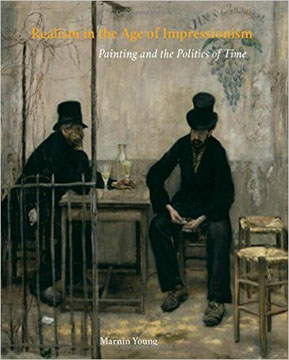 Mary Hunter reviews Realism in the Age of Impressionism: Painting and the Politics of Time by Marnin Young. The author “provides an original, compelling argument about how transformations in the perception of temporality fueled a reengagement with Realist painting in France.” A “smart, engaging” volume, it “will make a lasting mark … on the central role of temporality in the history of modern art.” Read the full review at caa.reviews.
Mary Hunter reviews Realism in the Age of Impressionism: Painting and the Politics of Time by Marnin Young. The author “provides an original, compelling argument about how transformations in the perception of temporality fueled a reengagement with Realist painting in France.” A “smart, engaging” volume, it “will make a lasting mark … on the central role of temporality in the history of modern art.” Read the full review at caa.reviews.
 Jane King Hession discusses Steven M. Reiss’s Frank Lloyd Wright’s Pope-Leighey House. This “skillful retelling of the complex history of a 1,200-square foot Usonian house” both “rigorously analyzes site issues” and “reflects on broader topics including changing social attitudes toward housing in the postwar years” and “the nascent yet evolving preservation movement in the United States in the early 1960s.” Read the full review at caa.reviews.
Jane King Hession discusses Steven M. Reiss’s Frank Lloyd Wright’s Pope-Leighey House. This “skillful retelling of the complex history of a 1,200-square foot Usonian house” both “rigorously analyzes site issues” and “reflects on broader topics including changing social attitudes toward housing in the postwar years” and “the nascent yet evolving preservation movement in the United States in the early 1960s.” Read the full review at caa.reviews.
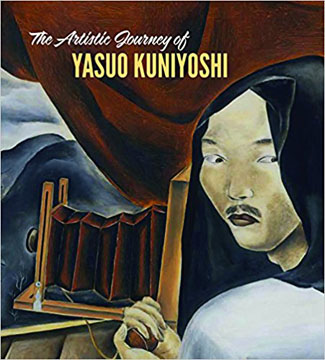 Sybil E. Gohari discusses The Artistic Journey of Yasuo Kuniyoshi, an exhibition and catalogue organized by the Smithsonian American Art Museum. The show “chronicles this important mid-century artist” whose work “combines American folk and Surrealist art with dreamlike perspectives,” highlighting “the figurative dimension” of his art and enhancing “an understanding of the period by presenting its diversity.” Read the full review at caa.reviews.
Sybil E. Gohari discusses The Artistic Journey of Yasuo Kuniyoshi, an exhibition and catalogue organized by the Smithsonian American Art Museum. The show “chronicles this important mid-century artist” whose work “combines American folk and Surrealist art with dreamlike perspectives,” highlighting “the figurative dimension” of his art and enhancing “an understanding of the period by presenting its diversity.” Read the full review at caa.reviews.
New in caa.reviews
posted by CAA — June 09, 2017
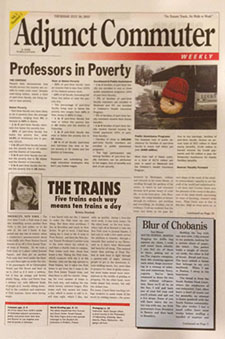 William S. Smith discusses Adjunct Commuter Weekly, edited by Dushko Petrovich, “a one-off, twenty-page publication” created “by and for these academic day laborers.” Although it “employs the conventions of newspaper publishing in a tongue-in-cheek manner,” it “also seems intended to publicize the struggle it documents.” Moreover, Adjunct Commuter Weekly “has to be seen within a tradition of artists’ publications.” Read the full review at caa.reviews.
William S. Smith discusses Adjunct Commuter Weekly, edited by Dushko Petrovich, “a one-off, twenty-page publication” created “by and for these academic day laborers.” Although it “employs the conventions of newspaper publishing in a tongue-in-cheek manner,” it “also seems intended to publicize the struggle it documents.” Moreover, Adjunct Commuter Weekly “has to be seen within a tradition of artists’ publications.” Read the full review at caa.reviews.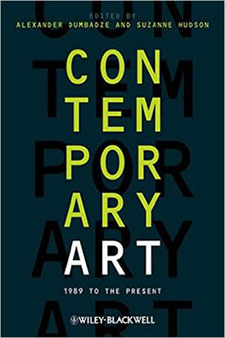 Robert Summers reviews Contemporary Art: 1989 to the Present, an anthology edited by Alexander Dumbadze and Suzanne Hudson. With the “desire to expand the discussion of contemporary art to include a multiplicity of voices,” the volume features “forty-six international writers” grouped into fourteen rubrics. Although “there are blind spots in the anthology, it is very much worth reading.” Read the full review at caa.reviews.
Robert Summers reviews Contemporary Art: 1989 to the Present, an anthology edited by Alexander Dumbadze and Suzanne Hudson. With the “desire to expand the discussion of contemporary art to include a multiplicity of voices,” the volume features “forty-six international writers” grouped into fourteen rubrics. Although “there are blind spots in the anthology, it is very much worth reading.” Read the full review at caa.reviews.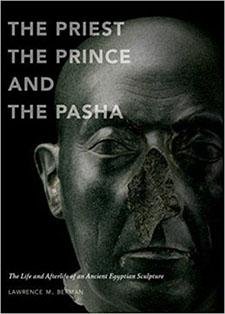 Jean Li reads The Priest, the Prince, and the Pasha: The Life and Afterlife of an Ancient Egyptian Sculpture by Lawrence Berman. Focusing on “the so-called Boston Green Head,” the book questions “what is it about antiquities that so compels us to collect them” by examining “the personalities responsible for the ‘afterlife’ of the head.” It “spurs reflection on the issues of desire, value, and commodification.” Read the full review at caa.reviews.
Jean Li reads The Priest, the Prince, and the Pasha: The Life and Afterlife of an Ancient Egyptian Sculpture by Lawrence Berman. Focusing on “the so-called Boston Green Head,” the book questions “what is it about antiquities that so compels us to collect them” by examining “the personalities responsible for the ‘afterlife’ of the head.” It “spurs reflection on the issues of desire, value, and commodification.” Read the full review at caa.reviews.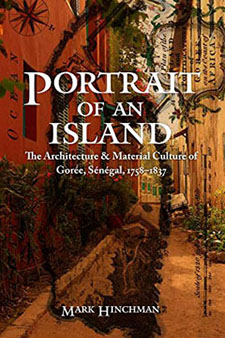 Michelle Moore Apotsos reviews Mark Hinchman’s Portrait of an Island: The Architecture and Material Culture of Gorée, Sénégal, 1758–1837. In this “meticulous, compelling” study of Gorée Island, “a depot for the trans-Atlantic slave,” the author brings to light “its accompanying history as a center of globalistic capitalistic enterprise and the point of origin for an emergent brand of Afro-modernity.” Read the full review at caa.reviews.
Michelle Moore Apotsos reviews Mark Hinchman’s Portrait of an Island: The Architecture and Material Culture of Gorée, Sénégal, 1758–1837. In this “meticulous, compelling” study of Gorée Island, “a depot for the trans-Atlantic slave,” the author brings to light “its accompanying history as a center of globalistic capitalistic enterprise and the point of origin for an emergent brand of Afro-modernity.” Read the full review at caa.reviews.New in caa.reviews
posted by CAA — June 02, 2017
Rachel Goshgarian visits Court and Cosmos: The Great Age of the Seljuqs at the Metropolitan Museum of Art. As “the first major exhibition on the Seljuqs in the United States,” the show “sets out to elucidate how the orders of this world and the next were conceptualized and represented in the Seljuq Empire and its successor states,” and, “to a certain extent,” the curators “delivered.” Read the full review at caa.reviews.
 Amy Chun Kim reads They Shall Not Have Me: The Capture, Forced Labor, and Escape of a French Prisoner in World War II, the artist Jean Hélion’s account of his imprisonment and escape from German camps. His “experience of the concrete as a camp inmate consolidated an aesthetic trajectory that was already in motion,” and this “vivid portrait” is “a stylistic testimony to this rejection of abstraction.” Read the full review at caa.reviews.
Amy Chun Kim reads They Shall Not Have Me: The Capture, Forced Labor, and Escape of a French Prisoner in World War II, the artist Jean Hélion’s account of his imprisonment and escape from German camps. His “experience of the concrete as a camp inmate consolidated an aesthetic trajectory that was already in motion,” and this “vivid portrait” is “a stylistic testimony to this rejection of abstraction.” Read the full review at caa.reviews.
 Agata A. Gomółka reviews Gretchen E. Henderson’s Ugliness: A Cultural History. The author “ventures on a critical journey through the history of ugliness, viewing the concept through the lens of culture and corporeality” and “packs an abundance of fascinating case studies and thought-provoking insights into a stimulating conceptual framework.” It is a “highly readable, erudite, and compelling account.” Read the full review at caa.reviews.
Agata A. Gomółka reviews Gretchen E. Henderson’s Ugliness: A Cultural History. The author “ventures on a critical journey through the history of ugliness, viewing the concept through the lens of culture and corporeality” and “packs an abundance of fascinating case studies and thought-provoking insights into a stimulating conceptual framework.” It is a “highly readable, erudite, and compelling account.” Read the full review at caa.reviews.


